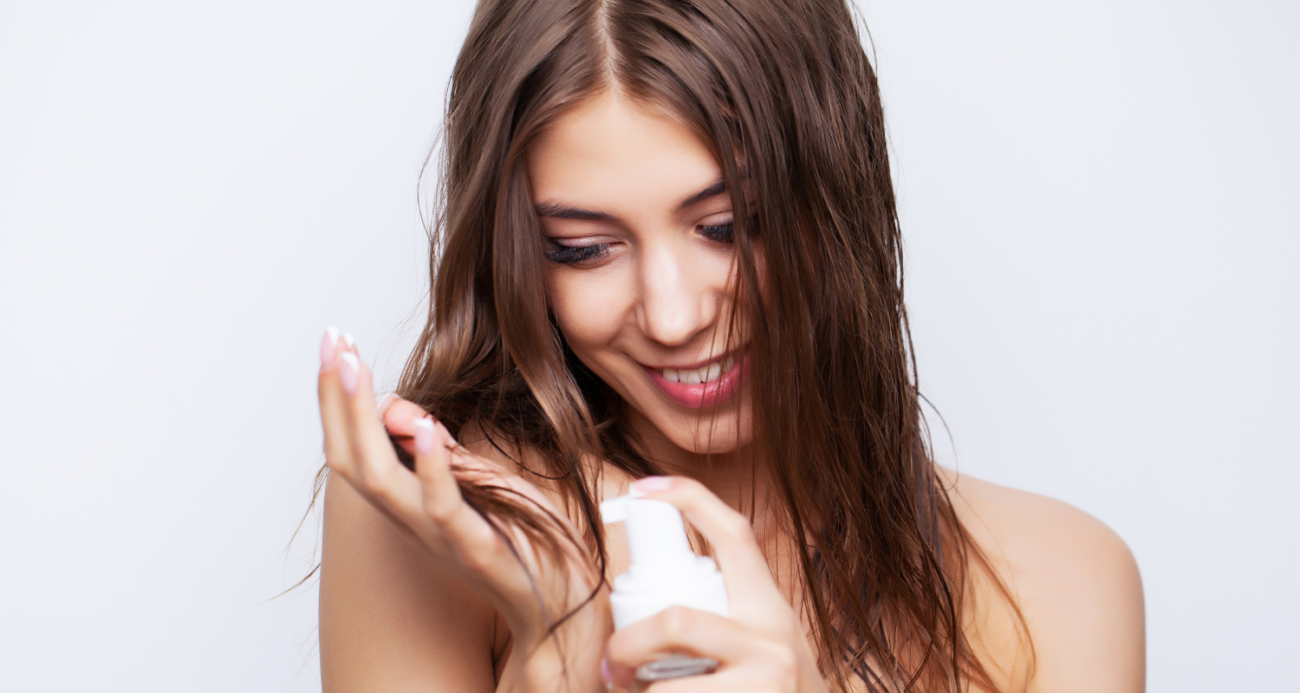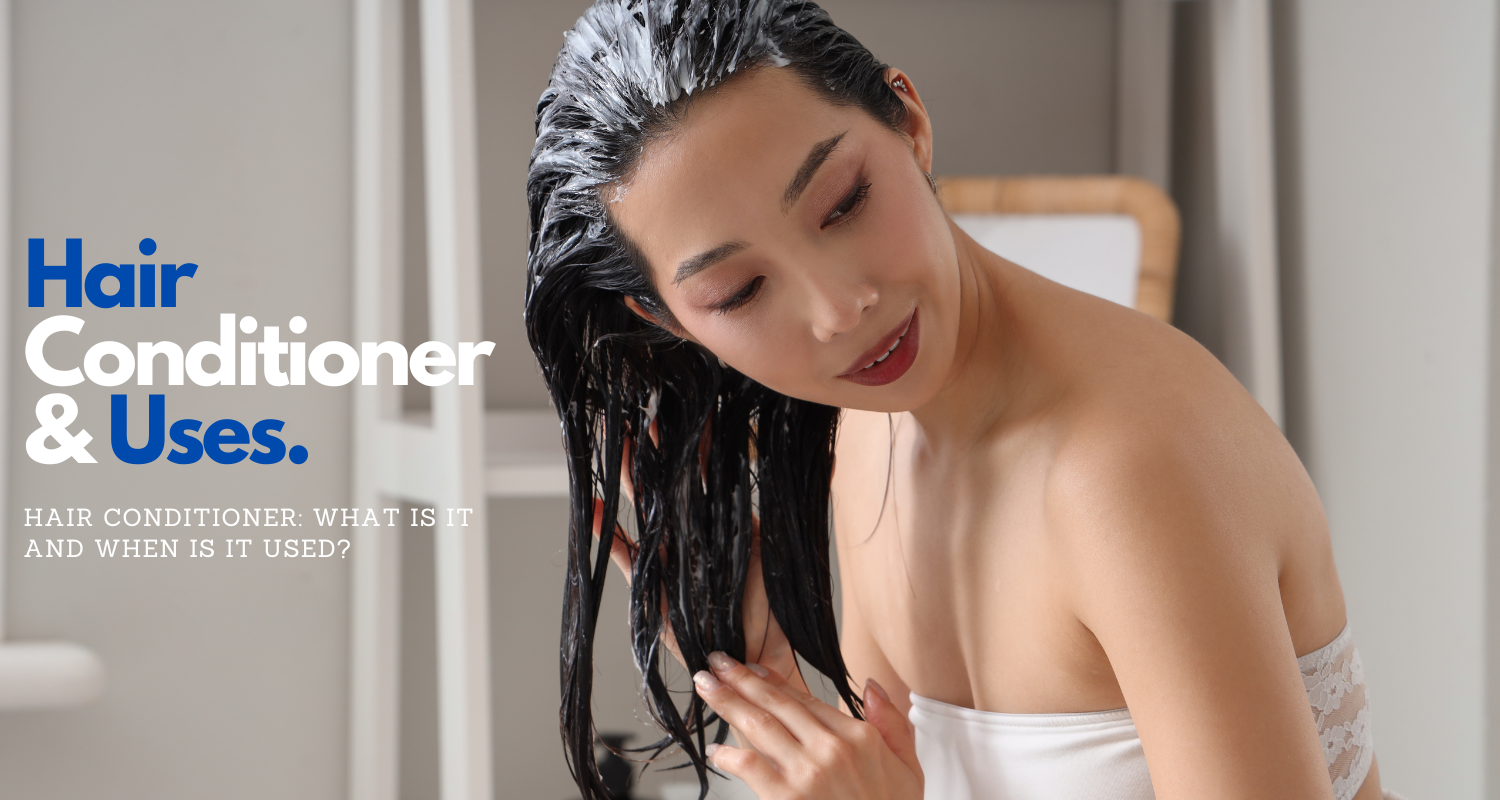What is Conditioner?
Hair Conditioner is a hair care product applied after shampooing to smooth and soften the hair. The main purpose of conditioner is to:
- Moisturize the hair and scalp
- Make hair more manageable and easier to style
- Make hair softer, smoother, and shinier
- Detangle hair and reduce static
- Protect hair from damage caused by styling and environmental factors
The key difference between conditioner and shampoo is that shampoo is designed to cleanse the hair by removing dirt, oil, and product buildup, while conditioner deposits nourishing ingredients onto the hair to replenish moisture, smooth the cuticle, and improve texture and manageability.
Shampoo contains detergents and surfactants that strip away excess oil and impurities, which can leave hair feeling dry and rough. Conditioner contains ingredients like oils, silicones, fatty alcohols and humectants that coat the hair shaft to restore hydration, softness and shine after shampooing. Using both is important for clean, healthy, conditioned hair.
How Does Conditioner Work?
Conditioner works by coating the hair shaft to seal cuticles, restore moisture, and make hair smoother and easier to detangle. When hair is washed, the shampoo cleans by lifting the cuticles on the hair shaft. This opens the cuticle layers, allowing dirt and oils to be removed. However, it also leaves the cuticle layers rough and opened.
Conditioner contains ingredients that deposit onto the hair shaft and seal the cuticle layers back down. This helps smooth the hair cuticle and restore moisture that may have been lost during shampooing. Common conditioning agents that coat the hair include silicones, fatty alcohols, cationic polymers, and oils/butters.
Sealing the cuticle layers helps prevent moisture loss and friction that causes tangles. The coating action also makes it easier for a comb to glide through hair without snagging, reducing breakage. So in summary, conditioner works by sealing, smoothing, and adding slip to hair strands. This makes hair more manageable, shiny, soft, detangled, and moisturized.
Types of Conditioners
There are several types of conditioners formulated for different uses and hair types:
Rinse-Out vs. Leave-In
Rinse-out conditioners are the most common type. They are applied after shampooing and rinsed out a few minutes later. They provide instant smoothing and detangling effects but the benefits don’t last as long.
Leave-in conditioners are designed to be left on the hair and not rinsed out. They provide ongoing hydration and protection to hair. Leave-ins are lighter and won’t weigh hair down like traditional conditioners. They are ideal for dry, damaged, or color-treated hair.
Deep Conditioning Treatments
Deep conditioners provide intensive, deeper conditioning for very dry or damaged hair. They are thicker in consistency and left on for 10-30 minutes before rinsing. The deeper conditioning helps to restore hair health.
Regular conditioners are lighter in formulation and meant for quick conditioning after shampooing. They are applied for just a few minutes before rinsing out. Regular use helps maintain healthy hair.
Formulas for Hair Types
Moisturizing conditioners with ingredients like shea butter, coconut oil, aloe vera work best for dry, brittle hair.
Reconstructing conditioners with keratin, collagen, proteins, and ceramides help strengthen and repair damaged, overprocessed hair.
Color-protecting conditioners contain UV filters and vitamins to seal in hair color and prevent fading. Great for color-treated hair.
Smoothing conditioners with silicones or oils help tame frizzy, curly, or thick hair.
Volumizing conditioners are lightweight, won’t weigh fine hair down, and add bounce.
Clarifying conditioners remove product buildup from hair without stripping oils. Ideal for oily hair/scalp.
Key Ingredients in hair Conditioner
Conditioners contain various ingredients that help nourish, smooth, and protect hair. Some of the key ingredients found in most conditioners include:
Fatty Alcohols
Fatty alcohols like cetyl alcohol and stearyl alcohol create a protective coating on the hair shaft to help smooth and soften hair. They help reduce friction and prevent moisture loss by sealing the cuticle. Common fatty alcohols in conditioners include cetyl, stearyl, cetearyl, and behenyl alcohol.
Cationic Surfactants
Cationic surfactants are positively charged molecules that bind to the negatively charged hair surface. This helps the conditioner ingredients absorb into the hair cuticle. Some examples are behentrimonium chloride, cetrimonium chloride, and stearamidopropyl dimethylamine.
Silicones
Silicones like dimethicone and amodimethicone add slip and shine to hair. They fill in gaps on the cuticle layer to smooth the hair shaft. Silicones also form a protective barrier on the hair to reduce moisture loss.
Natural Oils and Butters
Some conditioners contain natural oils like argan, coconut, and olive oil or butters like shea and cocoa butter. These oils and butters contain fatty acids and vitamins that nourish and moisturize hair. Common options are jojoba, almond, grapeseed, and avocado oils.
How to Apply Hair Conditioner
After shampooing, apply conditioner evenly to the mid-lengths and ends of your hair. Focus on the areas that feel driest or most damaged. Do not apply conditioner directly to your scalp, as this can leave hair limp and greasy.
Work the conditioner through your hair from roots to ends using your fingers or a wide-tooth comb. Ensure all strands are thoroughly coated for maximum conditioning.
Leave the conditioner in for 1-3 minutes before rinsing out. This gives the conditioner time to nourish and moisturize each hair strand. Leaving conditioner in for too long though can lead to buildup and weighed down hair.
Rinse the conditioner out with cool or lukewarm water. Make sure to rinse thoroughly so there is no residue left behind. Any leftover conditioner can make hair limp and greasy over time.
After rinsing, gently squeeze out excess water and apply any leave-in treatments or styling products as desired. Your hair is now conditioned and ready for blow drying or air drying.

Conditioner Benefits
Conditioner provides several benefits for hair health and appearance. One of the main benefits is that it helps smooth and soften the hair cuticle. Conditioner contains ingredients like oils, silicones, and emollients that coat the hair shaft and seal the cuticle. This helps reduce friction and prevents tangles, minimizing damage from brushing and styling. It leaves hair feeling smooth, silky, and touchably soft.
Conditioner can also add shine to the hair by reflecting light. Ingredients like silicone form a protective layer on the hair that creates a glossy finish. Conditioner helps restore shine, especially for hair that has become dull or damaged from overprocessing. Using conditioner after shampooing will leave hair looking healthy, strong, and radiant.
Additionally, conditioner helps reduce frizz and flyaways. It seals the cuticle so the hair lays flat and sleek against the head. This is especially beneficial for curly, wavy, or thick hair types that are prone to poofiness. Conditioner acts like a detangler, and the film it leaves on the hair prevents strands from catching and knotting. Hair becomes more manageable and easier to comb through after conditioning.
So in summary, the key benefits of conditioner are:
- Smooths and softens hair
- Adds shine
- Reduces frizz
- Makes hair more manageable
By conditioning regularly, you can enjoy these hair perks and improve the look and feel of your locks. Conditioner is an important step in any hair care routine.
When to Use Conditioner
Conditioner should be used after every shampoo to help restore moisture and smoothness to hair. Shampoo cleans hair by removing excess oil and product buildup. However, it can also strip away the hair’s natural oils and leave it feeling dry and brittle. Conditioner helps replenish those oils and seal the cuticle layer to leave hair feeling soft, smooth, and detangled.
For those with dry or damaged hair, conditioner may be needed more frequently than just after shampooing. Very dry hair can benefit from conditioning treatments in between washes. Look for intensive deep conditioning masks and leave-in conditioners to provide extra moisture. Damaged hair also needs the added protection conditioner provides. Split ends, chemical processing, heat styling, and other stressors break down the cuticle layer, leading to frizz and breakage. Frequent conditioning seals the cuticle to prevent damage and further drying.
Conditioner Precautions
When using conditioner, it’s important to be aware of some precautions to avoid potential issues:
Avoid getting conditioner directly on your scalp. Conditioner is designed for the hair strands, not the scalp itself. Putting conditioner on your scalp can lead to buildup and irritation over time. Focus on applying conditioner to the mid-lengths and ends of your hair.
Rinse conditioner out thoroughly. After applying conditioner and letting it sit for a few minutes, be sure to rinse all of it out with water. Leftover conditioner residue on your hair can make it limp, greasy, and flat. Rinse until the water runs clear.
Watch out for product buildup. Using conditioner too frequently or using formulas that are too heavy for your hair type can lead to product buildup over time. This is when conditioner ingredients cling to the hair shaft and accumulate. It can make hair dull, limp, and weighed down. Clarify occasionally with a shampoo to remove buildup.
Following these precautions when using conditioner will help avoid potential downsides and keep your hair healthy, shiny, and conditioned. Focus conditioner on the lengths, rinse thoroughly, and be mindful of overuse.
DIY Conditioners
Making your own conditioner at home can be a fun and rewarding way to provide natural nourishment to your hair. Homemade conditioners allow you to control exactly what ingredients go into the formula, often utilizing natural oils, butters, and extracts to hydrate and repair hair. Some popular ingredients to include are:
Oils – Coconut, olive, argan, jojoba and almond oil are excellent options. They contain fatty acids that help moisturize and add shine. A little goes a long way, so start with 1-2 tablespoons.
Honey – Honey is a humectant that helps hair retain moisture. It also contains antioxidants and enzymes that boost shine and softness. Use 1-2 tablespoons of raw honey.
Yogurt – The proteins in yogurt strengthen and repair hair follicles and shafts. It also acts as a moisturizer. Use 1 cup of plain yogurt.
Avocado – The fatty acids and vitamins in avocado nourish dry, damaged hair. Mash up half an avocado and apply.
Eggs – Eggs are packed with protein to reinforce hair and prevent breakage. Use 1-2 eggs mixed with other ingredients.
Aloe Vera – The vitamins and enzymes in aloe vera soothe the scalp, boost hair growth and add hydration. Use 2-4 tablespoons of the gel.
Making DIY conditioners allows you to reap the benefits of these natural ingredients. It’s best to apply homemade conditioner after shampooing, coating hair from roots to ends. Allow it to sit for 5-10 minutes before rinsing out. Hair will feel supremely hydrated, soft and silky.
Conditioner vs Other Treatments
Conditioner works differently than some other common hair treatments like masks, leave-ins, and oils. Here’s a breakdown of how conditioner compares:
Conditioner vs Hair Mask:
Conditioner is lighter and meant for regular use, while masks are thicker and used less frequently as an intensive treatment.
Conditioner smooths the hair cuticle and prevents tangles, while masks deeply nourish and repair damaged hair.
Use conditioner every time you shampoo. Use a hair mask 1-2 times per week in place of conditioner.
Conditioner vs Leave-In Conditioner:
Regular conditioners are rinsed out after use, while leave-ins are designed to be left in the hair.
Leave-ins provide lightweight moisture and heat protection without weighing hair down. Use leave-in after washing.
Conditioners are more deeply moisturizing. Rinse out regular conditioner before applying leave-in.
Conditioner vs Oil:
Oils seal in moisture and add shine. Conditioners attract moisture into the hair itself.
Oils are concentrated and used sparingly. Conditioner is lighter and applied thoroughly.
Use oil after washing, or overnight before washing. Use conditioner during the washing process.
The main times to use each treatment are:
- Conditioner – Every time you shampoo
- Mask – Weekly deep conditioning treatment
- Leave-In – After washing as a heat protectant
- Oil – To boost shine and seal in moisture


